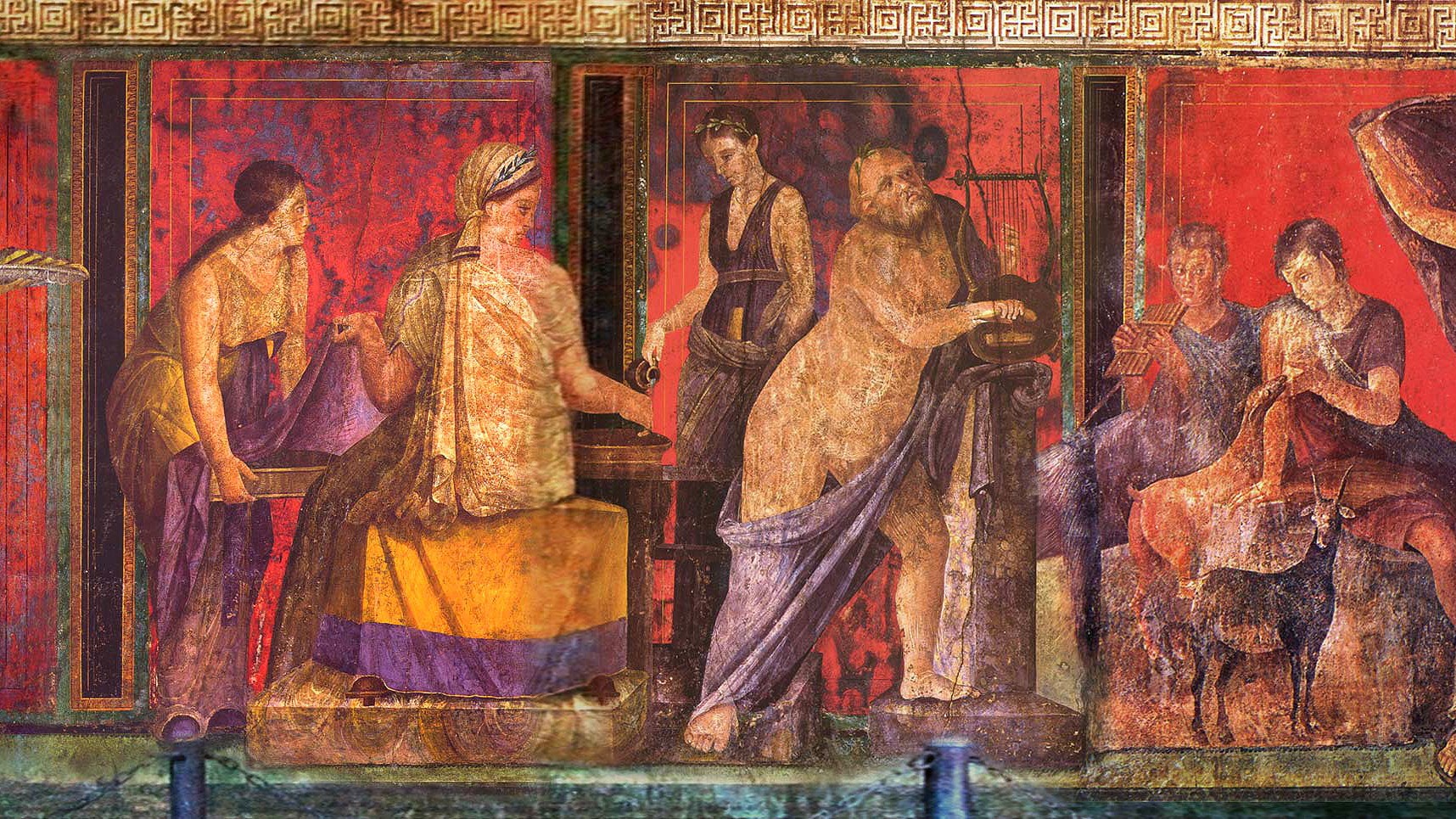Here’s what it was like to grow up in the Maya civilization

- Snippets of Maya daily life are preserved in the architecture of ruins like Tikal.
- Maya society revolved around corn, particular beauty standards, and a ball game called pitz.
- Long presumed peaceful, the Maya were in fact no strangers to the art of war.
Founded sometime between 600 BC and 250 AD, the Maya city of Tikal counts nearly 5,000 buildings that take up an area of 10 square miles. Ruling over a territory stretching from the jungles of Honduras to the upper edges of Mexico’s Yucatán Peninsula, it was abandoned during the 10th century, when overpopulation, warfare, and successive droughts caused the Maya civilization to shrink and fragment.
Much like Machu Picchu in Peru, Tikal temporarily dropped off the map before being “rediscovered” by modern society. Known only to local villagers, it was (mercifully) overlooked by the Spanish conquistador Hernán Cortés on his journey into the Maya heartland. John Lloyd Stephens and Frederick Catherwood, British explorers credited with unearthing numerous Guatemalan temples, also missed the ruins. It wasn’t until 1848 that they were visited by the country’s central government, which christened them “Tikal,” after the Maya word for “at the water hole.”
Visiting the ruins of Tikal in northern Guatemala today is like traveling back in time. Hidden within the rain forest, much of the ancient Maya city has been reclaimed by nature. Spider monkeys jump from treetop to treetop and, on occasion, can even be seen scaling the steps of one of the archaeological site’s six excavated pyramids. The area is littered with coatis, a member of the raccoon family native to Central America famous for their fluffy, upright tails. If you don’t watch your step, you might feel the silky, black legs of a tarantula crawling over your foot or (if you are less fortunate) experience the excruciating sting of the bullet ant, the most painful in the insect kingdom — equal, as the animal’s name suggests, to being shot by a gun.
Nowadays, the pyramids and other structures are inhabited mainly by bats, dangling from the dilapidated ceilings. However, in 750 AD, the zenith of the Maya Empire’s glory days, the city was home to over 60,000 human beings. In addition to the handful of surviving hieroglyphs and codices, hints of their complex and sophisticated way of life are preserved through their timeless architecture.
Maize and tobacco
Reconstructing the routines and responsibilities of ordinary Maya is a daunting task. This is not only because the majority of their artifacts and written records have been destroyed, but also because the ones that survived tend to prioritize the experiences of gods and upper-class individuals over those of the regular people that served them.

A rare exception to this rule is a “painted pyramid” uncovered at Mexico’s Calakmul site containing murals that depict unnamed, unidentifiable Maya — men, women, and children — apparently doing what Maya did. In one panel, a man with a large pot and a spoon, labeled “maize gruel person” in hieroglyphics, stands by another man drinking from a bowl. In another, a women with a woven basket hands out tamales made from maize. A third shows people preparing and transporting food in rope-tied bundles carried with a tumpline over their foreheads, while a fourth, labelled “tobacco person,” represents what must be people processing the psychoactive plant in cylindrical clay vessels. Not every image on the pyramid has been deciphered, however: among the unsolved mysteries is a figure with a pole stand and a scarlet macaw perched on top, as well as unidentifiable pin-like objects protruding from baskets.
Tobacco was almost as important for the Maya as maize was, with panels showcasing its cultivation and consumption popping up in ruins throughout Central America. Smoked through ornate pipes or packed in cigar-like bundles, tobacco was largely restricted to rituals and ceremonies — a practice that continues with the Maya’s present-day descendants, who believe the smoke can ward off evil spirits.
Growing up Maya
In Maya society, few events were as significant as the birth of a child. Both a sign of good luck and a measure of personal wealth, Maya children had two names: their official name, given to them by a priest, and their nickname, given to them by their parents.
The Maya had a specific definition of beauty, and children were subjected to various body modifications to help them meet societal standards in adulthood. After infants had been given their priestly name, their parents would place a small bead between their eyes, causing them to become cross-eyed. Next, wooden planks were bound to the sides of their head, molding their soft skulls into a flatter, more desirable shape. Piercings, in the nose, ears, and lips, came later.

Maya society maintained strict gender norms. At age five, boys were given white beads to weave into their hair, while girls received red shells they wore around their waist — accessories that symbolized their purity and innocence, and which they wore until they completed the ceremony that marked the end of childhood and the start of adolescence. For boys, this ceremony took place when they were 14; for girls, when they were 12.
Maya girls growing up in Tikal would have lived with their parents until they got married, with their mothers teaching them how to cook and weave. Single men, by contrast, lived with other single men in communal houses, where they learned various crafts and trained for war. This period in the “single adult” Maya’s life was short-lived, as men on average married at age 18 and women at 15. After marriage, couples moved in with the family of the bride, with the husband helping out his father-in-law.
Maya gender norms, however strict, shifted as the empire developed. According to archaeologist Kathryn Reese-Taylor, women’s roles greatly expanded during the glory days of 600 to 800 AD, with some exerting influence as priestesses or, in select cases, as warrior-queens.
Blood, the mortar of Maya ritual life
In the center of Tikal, at a plaza enclosed by three different pyramids, are the ruins of what tour guides note was once a court for playing pitz. Also known as pok-a-tok, this mix between soccer, volleyball, and basketball saw players try to bounce a rubber ball through a stone hoop using only their elbows, knees, and hips. Pitz was not just played for recreational purposes, but also to settle political and religious disputes. If two communities were odds, or someone challenged the sovereign, games would decide who was right and who was wrong.
Contemporary fascination with pitz has helped perpetuate the notion that the Maya were, by and large, a peace-loving people that avoided armed conflict at all costs. This interpretation of the empire was championed by leading archaeologists like J. Eric Thompson, who famously argued that sites like Tikal were little more than religious centers, populated only during important ceremonies. His argument fell apart as excavations revealed the “water hole” was indeed a fully-functioning city, inhabited not only by priests and astronomers, but also by farmers, merchants, and professional soldiers. Beginning in the 1960s, the long-awaited decipherment of Maya hieroglyphs further challenged Thompson’s thesis, as their surviving texts were filled with stories of battles, sacrifices, and torture.
“Blood,” epigrapher Linda Schele and art historian Mary Miller wrote in their 1986 book The Blood of Kings: Dynasty and Ritual in Maya Art, “was the mortar of ancient Maya ritual life.”
Far from a unified whole, the Maya civilization was a network of loosely connected fiefdoms vying for control over one another. Tikal was no exception, with translated hieroglyphs revealing an eventful military history. Inscriptions on an altar in the Maya city of Caracol in Belize tell that an alliance with another stronghold, Calakmul in Mexico, helped bring down their Guatemalan rival in 562. But Tikal did not remain subjugated for long: In 672, it launched a war against the nearby city of Dol Pilas, which — despite having been founded only 50 years before the conflict — was already styling itself as the water hole’s successor state.
Engravings on stairways in Dos Pilas record its catastrophic defeat, paving the way for Tikal’s rise as one of the undisputed leaders of the Maya world during its golden age.





